What's important when it comes to using epoxy adhesive?
Knowing the features, such as the curing time, strength, and heat resistant temperature, and “choosing” your adhesive according to the application involved.
Epoxy adhesives are available as “one-component” or “two-component” adhesives.
One-component epoxy adhesives are often used for “industrial purposes,” while two-component epoxy adhesives are used for “general and industrial purposes.”
One-component adhesives react with heat and solidify. Therefore, heating equipment is required. It also reacts when there is heat applied, so it may need to be refrigerated when being stored. When you consider things in terms of equipment and storage, handling this adhesive is difficult when it comes to general use.
What about two-component adhesives?
The two-component adhesives are divided up into the main agent and the curing agent. These two components react with each other and harden after mixing them together. No reaction happens unless mixing occurs, so there is no need to prepare heating equipment and the product can be stored at room temperature. For this reason, many two-component epoxy adhesives are deployed for general use.
Of course, when it comes to industrial use, two-component adhesives are sometimes used in cases such as those “where the user cannot afford to make the equipment investments required for heating” or cases “where the place of usage of adhesive cannot be subjected to heat.”
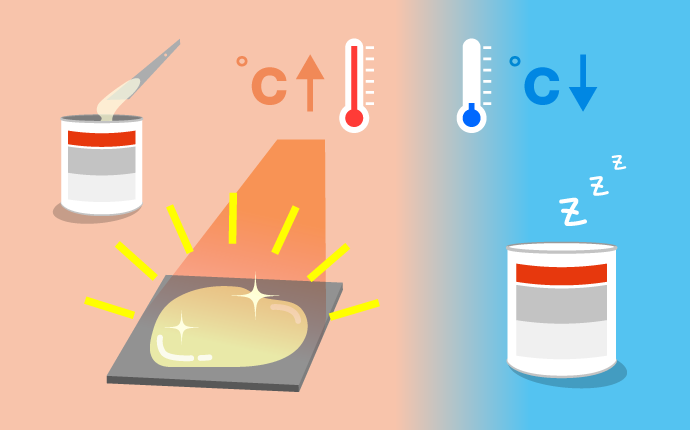
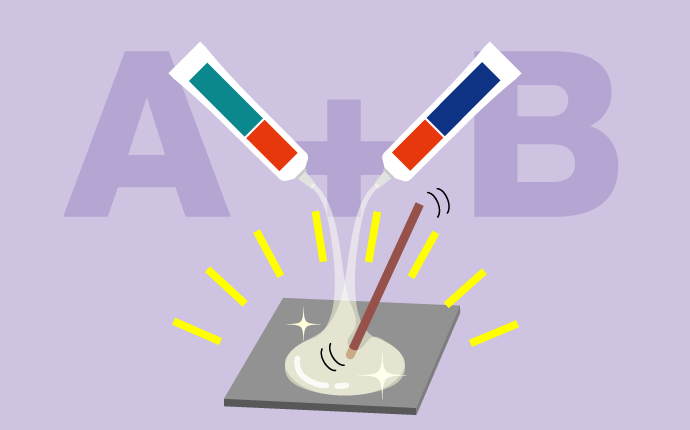
How long should one wait before the adhesive hardens?
The curing time of two-component adhesives for general use is 30 minutes for faster-drying products and several days for slower-drying products. You may want to wait one to several days if you want to make sure that adhesion has taken place.
Two-component adhesives harden by mixing, but they are easily affected by room temperatures and air temperatures. The temperature gets hot in the summer, so the adhesive tends to harden quickly during that season. However, hardening takes some time in the winter due to the low temperatures experienced at that time. That’s why one should wait longer than usual during the colder seasons.
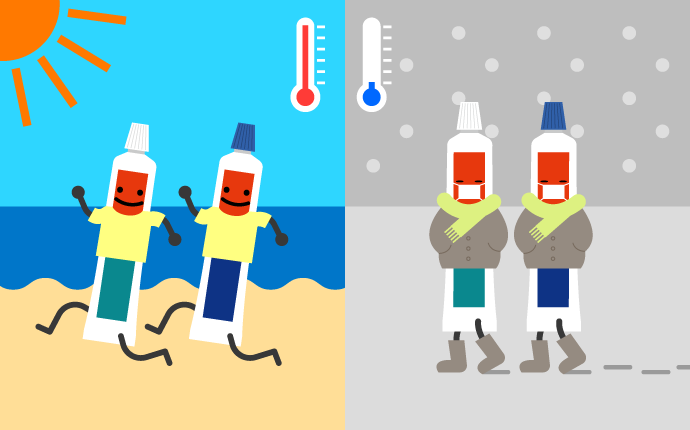
How much do I need to apply to make sure the adhesive sticks? How long do I have to wait for it to harden? The curing time varies depending on the type of epoxy adhesive being used and the environment in which it is used. So, make sure to check the instruction manual for the product you’re using.
Epoxy adhesives are stronger than other adhesives!
Epoxy adhesives have a high level of adhesive strength and can be used to bring together “heavy objects” (such as block walls) that cannot be bonded together using superglue or wood adhesives.
Are you aware of the unit of strength referred to as the “megapascal (MPa)”?
When the strength is 1 MPa, an area of 1 cm by 1 cm is affected by about 10.2 kg of force.
The strength limit of the industrial ThreeBond 2249K product for automobiles is 35 MPa. Even if the area of adhesion is small, the adhesive strength is so high that it can withstand five adult men (about 350 kg) hanging from it.
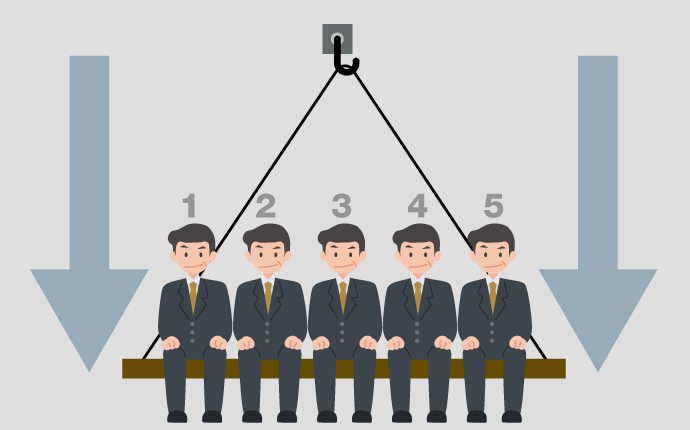
What is the heat resistant temperature?
The temperature at which the adhesive strength of the epoxy adhesive is maintained is generally in the range of about -50°C to 200°C. -50°C is a temperature where hot water will freeze instantly. On the other hand, a temperature of 200°C is high enough to fry food. Epoxy adhesives can maintain adhesive strength in such a wide range of temperature environments.
While people might tend to think that “epoxy adhesives harden when heated and can withstand high temperatures of any extent,” there is an upper limit when it comes to the temperatures which can be tolerated by such adhesives.
To make a fried egg, for instance, you drop an egg into a frying pan. If you take a finished fried egg cooked sunny-side up and add more heat, it will eventually be reduced to charcoal. You cannot take that charcoal and turn it back into the original fried egg. Like these fried eggs, epoxy adhesives also have a limit when it comes to heat resistance.
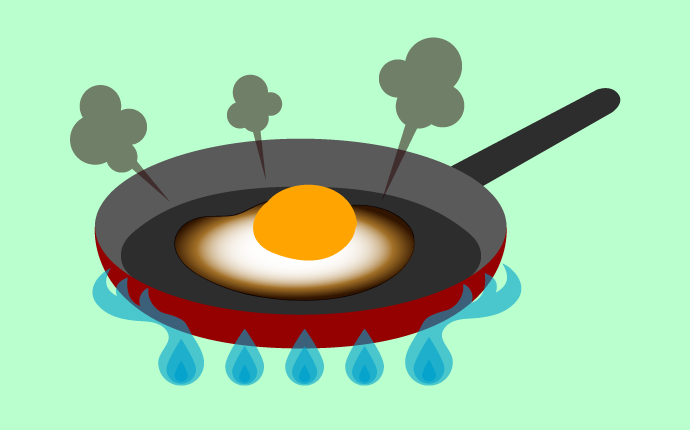
What material can you use it for?
Epoxy can be used for metal (iron, aluminum, stainless steel, nickel), plastic (polyphenylene sulfide, liquid crystal polymer, polybutylene terephthalate), wood, concrete, and other materials.
Because of its ease of use, there are many items we find around us which use epoxy resin! For example, we find it used in cars, TVs, personal computers, and smartphones. Differing materials can also be bonded together.
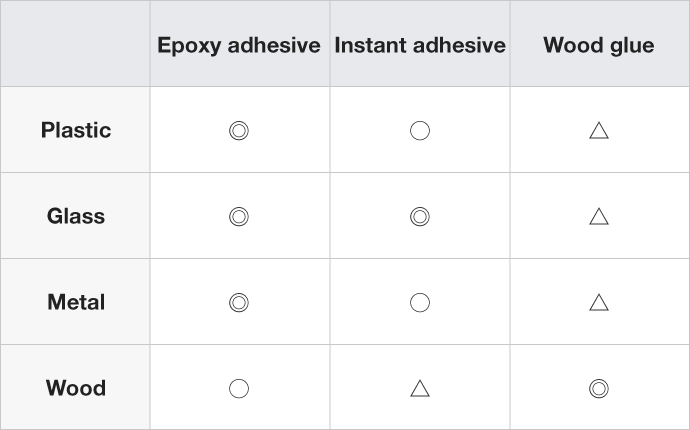
For example, we find it used in places like these.
- Repairing block fences: Used as an alternative to cement
- Table coating: Protects important household items from scratches
- Car repair: To fix scratches and dents
- Structural adhesion for automobiles: To lighten the whole car and improve fuel efficiency
How does they compare to other adhesives?
Epoxy adhesives are stronger than other adhesives, feature excellent heat resistance and durability, and can be bonded to various materials.
However, in terms of handling, it takes a lot of work to “mix” things together in the case of two-component adhesives and to “apply heating” in the case of one-component adhesives. There are also disadvantages in that it is difficult to peel off the adhesives due to the high levels of adhesive strength involved
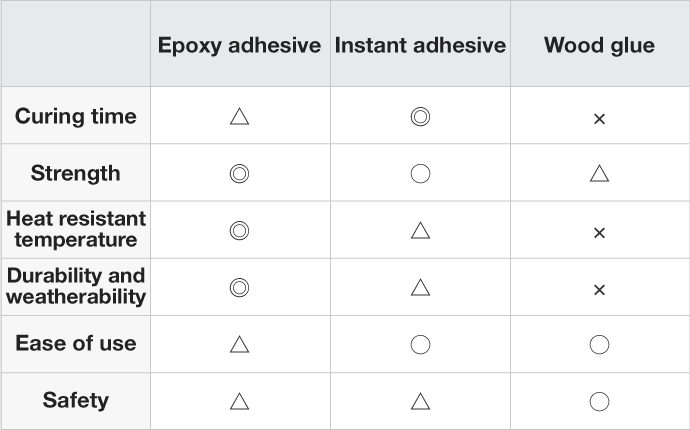
Each adhesive has its advantages and disadvantages, so it is important to choose the right one for the application involved when you are going to be using adhesives. Epoxy adhesives feature superior functions when compared to other adhesives. Let’s become familiar with the features and choose according to the application involved!
For those who want to know more about epoxy adhesives
If you would like to further deepen your interest in epoxy adhesives, please see the link below.
You will also be introduced ThreeBond adhesives where the chief component involved is epoxy.
Click here to view more information on ThreeBond 2249k
If you want to learn more about epoxy resins, check out our “seminars on adhesives.”
